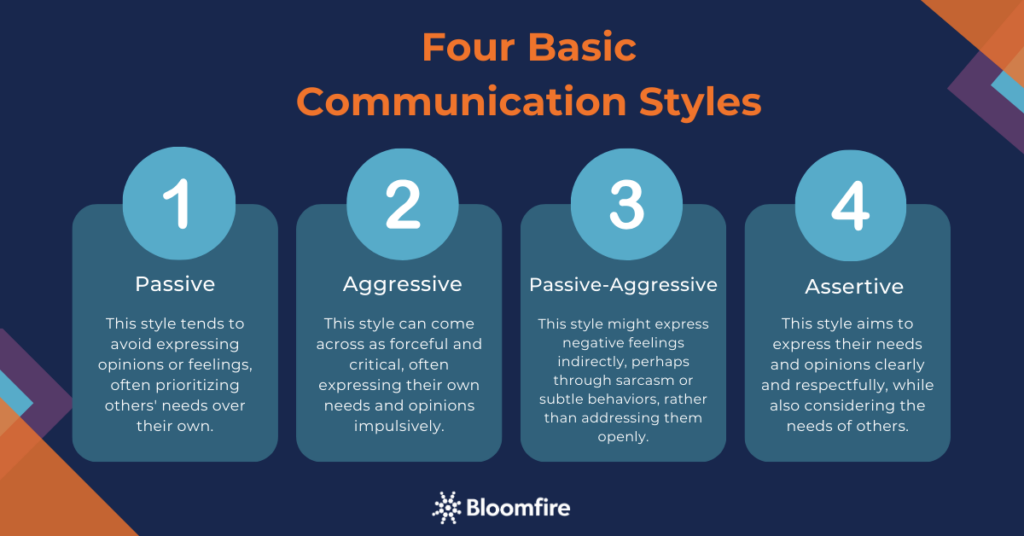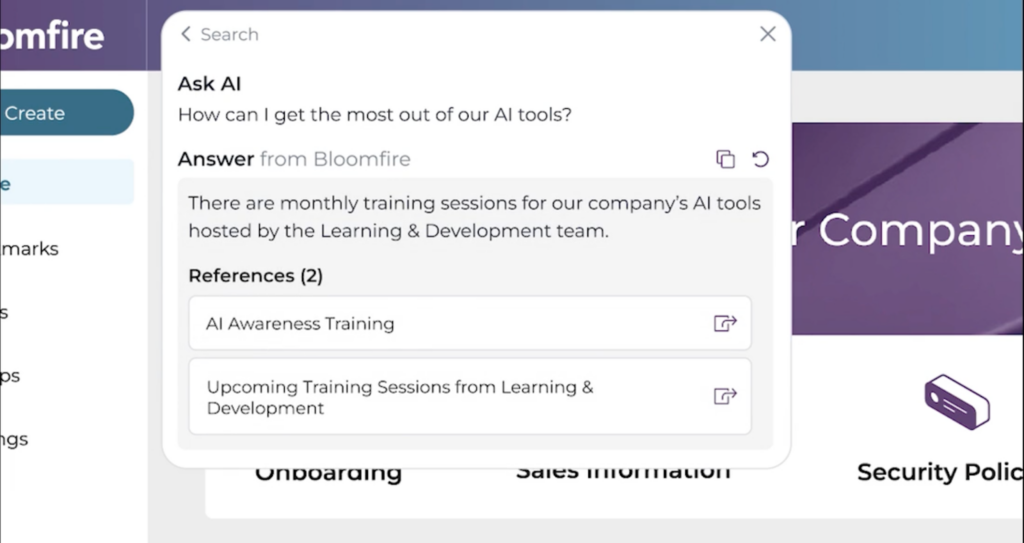9 Common Communication Issues In The Workplace

Effective communication is the backbone of a thriving business environment. Yet, many organizations encounter common communication issues in the workplace that impede productivity and collaboration. As a result, employees may feel undervalued, unengaged, and unlikely to go above and beyond to be innovators within your company. Even worse, poor communication can lead to misalignment between teams and hurt the customer experience.
There are several tell-tale signs of poor communication in a company, and thankfully, there are preventions and even a cure. Below, we look at nine of the most common workplace communication problems with strategies to address them.
1. Differences in Communication Styles
People have distinct communication styles and preferences. However, there are cases wherein organizations put less value on these distinctions.
For instance, a common misconception in leadership decades ago was that communication style is a one-way street. Those holding upper management positions must hold the fort by establishing an authoritarian communication approach. However, little consideration was given to how employees wanted to perceive the communication style. This has inevitably led to misinterpretations and conflicts.
Unfortunately, this is one of the common examples of communication challenges that some companies continue to overlook. In a report from The Economist Intelligence Unit, 42% of respondents pointed to differing communication styles as the biggest culprit behind miscommunication at work. This includes clashes stemming from generational gaps and preferences in communication methods based on their roles.
Strategies to Address Differences in Communication Styles
Some individuals prefer direct and concise communication, while others value more context and details. Companies must understand this basic fact. Knowing how employees receive and process information is critical to determining the most effective way to communicate with them, which helps minimize misunderstandings.
If differences in communication styles are common issues in your workplace, consider the following practical steps to address them.
- Incorporate communication styles in your onboarding process to know employee preferences (e.g., assertive, passive, aggressive, passive-aggressive).
- Conduct leadership training on workplace communication touching on all facets of dialogue or information sharing, including nonverbal and paraverbal communication.
- Keep information about communication approaches in your knowledge management (KM) system.
- Embed active listening and the practice of asking clarifying questions into your company culture.

Deliberately understanding these differences allows teams to be flexible in their communication approach and tailor their messages to meet others’ needs. Gone are the days when the spotlight was directed to the speaker. In this day and age, it’s imperative that you put more emphasis on the message’s receiver.
A Tool for Better Workplace Communication
Make information available and improve communication across your company using a knowledge management system.
Schedule a Live Demo
2. Using the Wrong Communication Channel
If you’re active online, you may have encountered the meme, “This entire meeting could have been an email.” It’s a playful jab at a common workplace frustration wherein non-urgent short messages could have been delivered through email rather than a time-consuming conference call or in-person meeting.
Multiple broadcast channels are available in organizations, especially after the rise of remote and hybrid work setups in response to the COVID-19 work restrictions. According to Project.co, 31% of employees still prefer emails for internal communications, followed closely by online chat tools at 30%.
However, preference does not necessarily equate to ideal practice. Choosing the right communication channel should also depend on the urgency, complexity, and sensitivity of the matter.
For instance, concerns with detailed information that warrants multiple references or re-reading can be better added to a knowledge management platform instead of cramming everything in an email. Additionally, some issues may be best resolved through a quick conversation rather than a long email chain that wastes everyone’s time and can get buried in your inbox.
Strategies to Avoid Misuse of Communication Channels
Diverse communication channels make it easy for teams to collaborate, perform according to expectations or beyond, and align with the company’s goals. However, using an inappropriate channel to send a particular message or disseminate information can overturn these advantages. It can even impact productivity and employee engagement.
You can overcome this problem and other channel-related communication issues in the workplace through the following ways.
- Create communication guidelines with a directory that includes the intended purposes for each channel.
- Connect the different platforms to streamline workflows and avoid information silos.
- Provide tools for asynchronous collaboration and communication.
- Let leaders and managers model good communication practices.
An extension of the communication issues linked to the misuse of broadcast channels is using a tool meant for quick conversations as a repository for critical information. This results in knowledge loss, especially if the app or tool does not do regular backups.
When you need to preserve knowledge or refer to it repeatedly, choose a searchable knowledge management platform that everyone in the organization can access. For instance, you could allow team members to record and share videos of their project updates when real-time input isn’t necessary, or subject matter experts could document answers to questions they are frequently asked and share them.
2. Information Overload
When employees are bombarded with excessive information from various sources, such as emails, meetings, instant messages, and social media, it becomes challenging to filter out what’s important. This constant influx can lead to cognitive overload, making it hard to focus, process information, and make decisions.
Ultimately, information overload creates a barrier to clear and concise communication. This can lead to misinterpretations, decreased productivity, and disconnect among employees. Furthermore, information overload can cause stress, anxiety, and feeling overwhelmed, negatively impacting employee morale and well-being.
Strategies to Overcome Information Overload
An overwhelming amount of information can kill productivity. The worst part is that you may not even notice how much time you waste trying to absorb knowledge in one go. To avoid the communication challenges that come with information overload, consider the following tips:
- Use KM software with artificial intelligence and intelligent search features to quickly access the information you need. This will allow you to focus on the right knowledge and jump from one resource to another.
- Provide information management and literacy training to hone skills in assessing data relevance and prioritization.
- Utilize email filters, task management tools, and productivity apps to organize and streamline information.

Bloomfire’s AI search lets you access information in one click.
Power Move: Categorizing knowledge can help compartmentalize information, reducing the stress of learning bulk data. Use Bloomfire’s series feature to centralize and interlink related posts, making it easier to relate one piece of information to another.
4. Information Hoarding and Knowledge Silos
Certain people may feel like “gatekeepers of information” within your company. For instance, you may repeatedly observe employees asking questions to the same person or team, or employees may hesitate to get specific information necessary to complete a project due to misconceptions about data exclusivity.
People don’t necessarily hoard knowledge on purpose. In many cases, their inability to share may stem from the lack of time for documentation or a structured guideline for knowledge sharing.
Different teams or departments may also have their own systems for storing content and knowledge. While this may work for inter-team communication, it can cause knowledge silos to form across the organization, leading to missed opportunities for cross-functional collaboration and goal misalignment. Plus, it may waste your employees’ time searching for information in other parts of the organization and duplication of work completed by another team.
Strategies to Overcome Information Hoarding and Knowledge Silos
Knowledge silos and information hoardings are communication problems in the workplace that can be addressed with a company-wide knowledge management platform. By moving away from different platforms for different teams, your company can make knowledge sharing more efficient and increase the visibility of work completed across the organization. You can also improve collaboration and innovation by bringing together different perspectives and ideas.
In addition to adopting a top-notch knowledge management solution, you can prevent these common communication problems in the following ways.
- Make it easy for subject matter experts (SMEs) to share knowledge. For instance, create templates or allow SMEs to document in the format that makes the most sense for their topic (e.g., through visual presentations, video, slide decks, or written documents).
- Offer external incentives for knowledge sharers—such as shout-outs or quarterly prizes for the top content contributors—to help get employees to share their knowledge.
Power Move: Some teams may still need dedicated space for sharing sensitive or function-specific information. Some KM solutions offer this functionality. For example, Bloomfire allows you to create Groups so that different teams or departments can access only information highly relevant to them while still having access to the broader company knowledge base.
5. Making Assumptions and Misinterpretations
Misunderstandings in the workplace often occur when employees assume that their peers are approaching a problem or project the same way they would. This may be based on their personal frame of reference.
When employees make assumptions about a project’s parameters, who will complete each step, how it will be completed, the review process, etc., work tends to fall short, and confusion takes over. This often indicates poor project management communication from the top down.
Strategies to Overcome Assumptions
Assumptions are a natural part of how we process information. However, they can lead to misunderstandings, conflicts, and poor decision-making in the workplace. To avoid these common communication issues, consider the following strategies:
- As a department or team leader, demonstrate clear communication to ensure assumptions don’t derail collaborative efforts. For instance, in meetings with action items, repeat them before attendees leave and make sure everyone understands their responsibilities and next steps.
- When someone else shares an idea with you, paraphrase it back to them and ask if you understand it correctly.
- Ask questions to prompt clarification when necessary. Schedule regular status updates and air on the side of over-communicating.
Essentially, to clear miscommunications due to assumptions, ensure that you encourage your teams to truly listen to what others are saying, both verbal and non-verbal. Consider providing developmental training and workshops on effective communication in the workplace, aside from keeping a relevant resource in your KM platform.
6. Lack of Message Clarity
Clear communication is crucial for workplace alignment. When information is poorly communicated—whether incomplete, vague, or contradictory—it can lead to misinterpretations and hinder employees’ ability to do their jobs effectively.
Incomplete or vague information creates confusion. Leaving out crucial details or assuming the recipient has the full context can prevent them from taking action or understanding the “why” behind a task. This ambiguity forces employees to spend extra time seeking clarification, wasting valuable time and resources.
Conflicting information from different sources further exacerbates the problem. Imagine receiving contradictory instructions from other managers or departments. This inconsistency undermines trust and makes it impossible for employees to know which direction to follow.
Strategies to Avoid Message Ambiguity
Promoting communication clarity can be implemented in simple ways, beginning with crafting clear, concise, and digestible information. However, you can be more deliberate in eliminating vague and incomplete information through the following actions.
- Use concrete language. Instead of using vague words like “soon,” “some,” or “later,” provide specific details such as exact dates, times, and quantities whenever possible. This will make your communication more straightforward and leave no room for misinterpretation.
- Never assume your audience has the whole picture. Help them understand your message by providing relevant background information and summarizing key past events or decisions.
- Document the essential details and store knowledge in an organized, accessible knowledge management system. If possible, present the key information in various content formats, especially if you’re communicating to multiple audiences.
When speaking to employees, encourage open dialogue and emphasize the importance of asking questions. Communicate project objectives, deadlines, roles, responsibilities, and other expectations to ensure everyone is on the same page.
7. Using Terminologies or Jargon
It’s not unusual to rely on industry or company-specific jargon or acronyms, especially if your business offers technical or complex products or services. Unfortunately, it can be difficult for some employees, especially new hires, to decode this language.
Using exclusive terminologies can make it especially difficult for them to search for necessary resources or documents. A simple example is when content creators or subject matter experts may use these terms in their titles, tags, or file names. Users can easily overlook the knowledge source without even realizing it provides the answers to their questions as they are not aware of the meaning of the jargon.
Strategies to Overcome Heavy Use of Jargon
Overreliance on jargon use may only need an easy fix. In hindsight, it begins with properly presenting the terms and adjusting your communication vocabulary based on the employee’s familiarity. Specifically, you can practice the following tips:
- Encourage SMEs to define or reduce jargon use for inclusive topics
- Choose a KM platform that allows people to find information based on different but related search terms (not just the terms used in the file name or tags).
A concrete example of the last strategy is using Bloomfire to build a synonym library. Say someone is searching for “ALTS” or “Alternative Components.” In that case, they can quickly find the term’s meaning and better understand the resource. Learn more about how else you can maximize your KM solution with our guide on the knowledge management trends companies should know.
8. Lack of Feedback
Employees should never feel like they’re in the dark about how they’re doing at their jobs. They also shouldn’t have to wait for their annual performance review to get feedback, especially if they aim to improve their work.
If employees get infrequent or no feedback, then they’re more likely to miss the mark and grow increasingly frustrated. This can lead to high turnover in your workplace. That doesn’t come cheap, considering it costs anywhere from 30% to 250% of an employee’s annual salary to replace them.
Strategies to Improve Giving Feedback
Everyone in the company can benefit from a culture that values feedback. To ensure you’re leading your employees toward success, ensure that the following actions regarding evaluations:
- Create a cadence for sharing feedback. As a manager, make sure you regularly meet with your direct reports and share feedback promptly.
- Adopt the CRC (commend, recommend, commend) approach in giving feedback
- Start a two-way conversation with your team members, and allow them to respond and ask questions.
- Be sure to share both positive and negative feedback. Congratulate employees when they exceed expectations, but do not be quick to criticize them when they don’t.
Focusing on the negative will lead top-performing employees to feel unvalued by their company and seek employment with a company that will. When you need to share negative feedback, make sure it’s constructive. Be specific about what needs improvement, and don’t criticize things outside the employee’s control.
9. Lack of Psychological Safety
Not every employee is comfortable voicing concerns or sharing their ideas publicly. In fact, according to HR software provider Ciphr, a staggering 25% of workers feel their voices aren’t being heard. These employees believe their feedback is not valued, and employers fail to encourage, listen to, or act upon their suggestions.
You must establish psychological safety to build a workplace culture where employees feel comfortable sharing ideas and knowledge. That is, a sense that people can openly contribute and feel that their ideas are being entertained without the risk of negative repercussions.
Strategies to Improve Psychological Safety
Start improving psychological safety by demonstrating to employees that there’s no fallout to sharing their ideas—and that the rewards for sharing good ideas are great. This requires support from the top down. There are also plenty of small, ongoing things you can do to promote psychological safety.
- Celebrate small wins and recognize employees who share ideas.
- Allow a few minutes at the beginning of meetings for team members to make small talk and get to know one another better. This will help build trust so that people feel more comfortable communicating.
- Demonstrate the positive impact of sharing knowledge by posting what you have learned from a recent project on your knowledge management platform.
- Actively encourage team members to share feedback and additional learning in the comments.
When people feel safe taking risks, asking questions, and admitting mistakes, communication flows more freely and openly. Make it an active commitment to providing psychological safety across your company to avoid common communication issues in the workplace that diminish your workforce’s morale.
Addressing Communications Issues in the Workplace
Strong communication isn’t easy. Fostering authentic relationships takes time, effort, and transparency. But in the end, it’s worth it. Open communication helps employees feel more satisfied in their work, feel comfortable collaborating with others on innovative ideas, and cultivate new skills that support company goals.
Follow the tips above to help your employees build healthy relationships with each other and with you. Watch them excel as they work for a company that values, listens to, and respects them.
Note: This blog post was originally published on April 14, 2019. It was most recently expanded and updated in December 2024.
Improve Workplace Communication with KM
Eliminate communication barriers and boost productivity with a knowledge management system.
Explore Bloomfire
Enterprise AI Search: Definition, Benefits, and Evolution

The Benefit of Company-Wide Knowledge Management in 2026

Are You Making These Common Knowledge Sharing Mistakes?

Estimate the Value of Your Knowledge Assets
Use this calculator to see how enterprise intelligence can impact your bottom line. Choose areas of focus, and see tailored calculations that will give you a tangible ROI.

Take a self guided Tour
See Bloomfire in action across several potential configurations. Imagine the potential of your team when they stop searching and start finding critical knowledge.